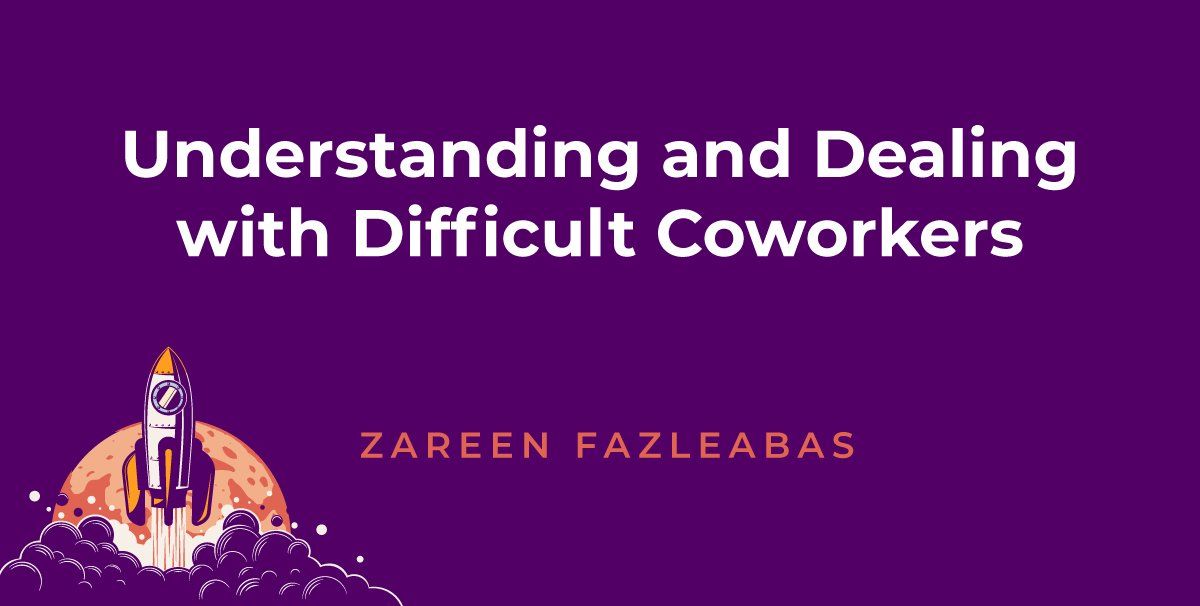Understanding and Dealing with Difficult Coworkers
We’ve all been there: trying to navigate workplace toxicity and drama—all because one (or more) coworkers are being difficult.
Dealing with difficult coworkers is a common issue in the workplace. According to a survey, interpersonal relationships are the number one source of tension in the workplace today.
That’s not great news, but the silver lining is that successfully navigating your way through a corporate pool of challenging colleagues is possible—and without getting infected by any harmful and toxic attitudes. This blog discusses the most common types of difficult coworkers and how best to deal with them.
5 Types of Difficult Coworkers
Let’s start by looking at five of the most challenging types of coworkers: the slacker, the negative complainer, the credit thief, the know-it-all, and the office gossip.
1. The Slacker
No one wants to be involved in a team where everyone doesn’t pull their fair share of the weight. That’s why the slackers (those that ride their coworkers’ coattails) can be a drain. And not only on overall morale but also on company productivity.
2. The Negative Complainer
The next type is the negative complainer. No one wants to be the office grump, sharing a cloud of gloom with the entire workplace. Not only are negative complainers unhappy workers, but like a bad cold, their bad attitudes spread like wildfire, infecting everyone in their vicinity.
3. The Credit Thief
There is almost nothing worse than working hard to accomplish a goal, only to have someone else take the credit. Many call these types “glory hogs,” but there is nothing glorious about them!
4. The Know-It-All
Most people know someone like this: someone who can never admit they are wrong. In their mind, they’re always right, so it’s difficult to teach them anything new. These individuals also tend to be arrogant—sometimes to the point of being an office bully that expects everyone to follow their plan, point of view, etc.
5. The Office Gossip
Sitting down to share a cup of coffee during break and talking about what happened over the weekend is usually a harmless and healthy way to connect with coworkers. However, these office conversations can easily veer into gossip territory. When we think of gossip, a word comes to mind: drama. The office gossips thrive on drama and seem to keep fueling the fire. And this doesn’t support office relationships in any way.
Why It’s Important to Understand and Deal with Difficult Coworkers
While it’s not easy, learning how to understand and deal with difficult coworkers can dramatically impact your office environment. It will improve your and your entire team’s morale and create a healthier setting for working together.
When you sweep problems under the rug, they build up until an explosive situation inevitably arises. In the long run, dealing with difficult coworkers results in better communication and team morale, which is ultimately better for your bottom line.
How to Navigate Difficult Coworkers
So, now that we know the types to look out for, here are a few proactive strategies for navigating difficult coworker interactions.
Maintain Professionalism
It’s easy to let our emotions get the best of us when dealing with difficult coworkers, but staying calm is the key to diffusing antagonizing situations. Keeping things professional at the workplace should always be rule number one.
1. Limit Your Interactions
When possible, if there’s a particular coworker that rubs you the wrong way, avoid interacting with them. Don’t make a big show or an official snub. Instead, remove yourself from unnecessary interactions where you know you may deal with gossip, pessimism, or other negative behaviors. Simply put: Do not engage.
2. Focus on the Positive
Like negativity is contagious, so too is positivity. When faced with negative coworkers, double down and focus on the positives. When no one jumps on the negative bandwagon with them, pessimistic coworkers won’t have an engaged audience and will have to move on.
3. Find Common Ground
When at odds with a coworker, get creative to find any kind of common ground that can help you reach the same level. It can pave the way to peace in the office. It also helps your coworkers feel equal to and relate to you, so they don’t feel dressed down.
4. Acknowledge Concerns and Feedback
Even challenging coworkers are humans who want to be seen and heard. Showing them that you acknowledge their concerns (even if you don’t necessarily agree) can dispel office tension and, ideally, make progress.
5. Talk to Management
Listen, I do not advocate dropping a dime on anyone. But ,inevitably, there will be times when you have tried everything you can, and you have no recourse but to take your concerns with your coworker to the next level—management—and let them take it from there.
6. Take Care of Yourself
It’s proven that you can better cope with challenging and stressful things in your life when you take care of yourself first. Be sure and take the time to get plenty of sleep, exercise, good nutrition, and personal time away from the office, and you will be amazed at how much more grounded you feel, even in the face of difficult coworkers.
To learn more about establishing a healthy workplace culture, and more, reach out to the AMP team today.




